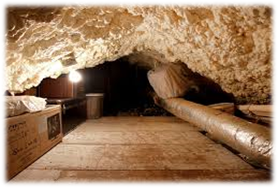
As the cost of heating our homes has risen, homeowner’s have understandably looked at ways of making their homes more energy efficient. Some have turned to the installation of spray foam insulation to the underside of roofs in roof voids.
Spray foam insulation was included in the government’s Green Homes Grant scheme (which closed to new applicants in March 2021) giving homeowners in England help to pay for certain energy-efficient home improvements and therefore it is more common than you may think. In fact, according to the Property Care Association there may be as many as 250,000 homes with spray foam roof insulation in the loft.
The spray foam roof insulation industry is unregulated and if it isn’t installed correctly or sprayed in a roof space that is unsuitable, such as one with a condensation problem, it can lead to rot to roof timbers. For this reason, it is looked upon unfavourably by most mortgage lenders.
As surveyors appointed by mortgage lenders, when we discover spray foam insulation in roof voids, we must report it. Because of its very nature it is very hard to assess the condition of the roof timbers concealed by the insulating foam. This means some lenders require further investigation. Other lenders, instead of investigating further, refuse to lend unless the spray foam roof insulation is removed. Some will not consider the property for mortgage purposes at all if spray foam insulation is present.
The financial implications for homeowners who have spray foam roof insulation can be significant. Vendors may find it difficult to sell their property to someone who needs a mortgage, unless they pay to get the insulation removed.
We are seeing spray foam insulation more and more and as you can see it is a complex issue.